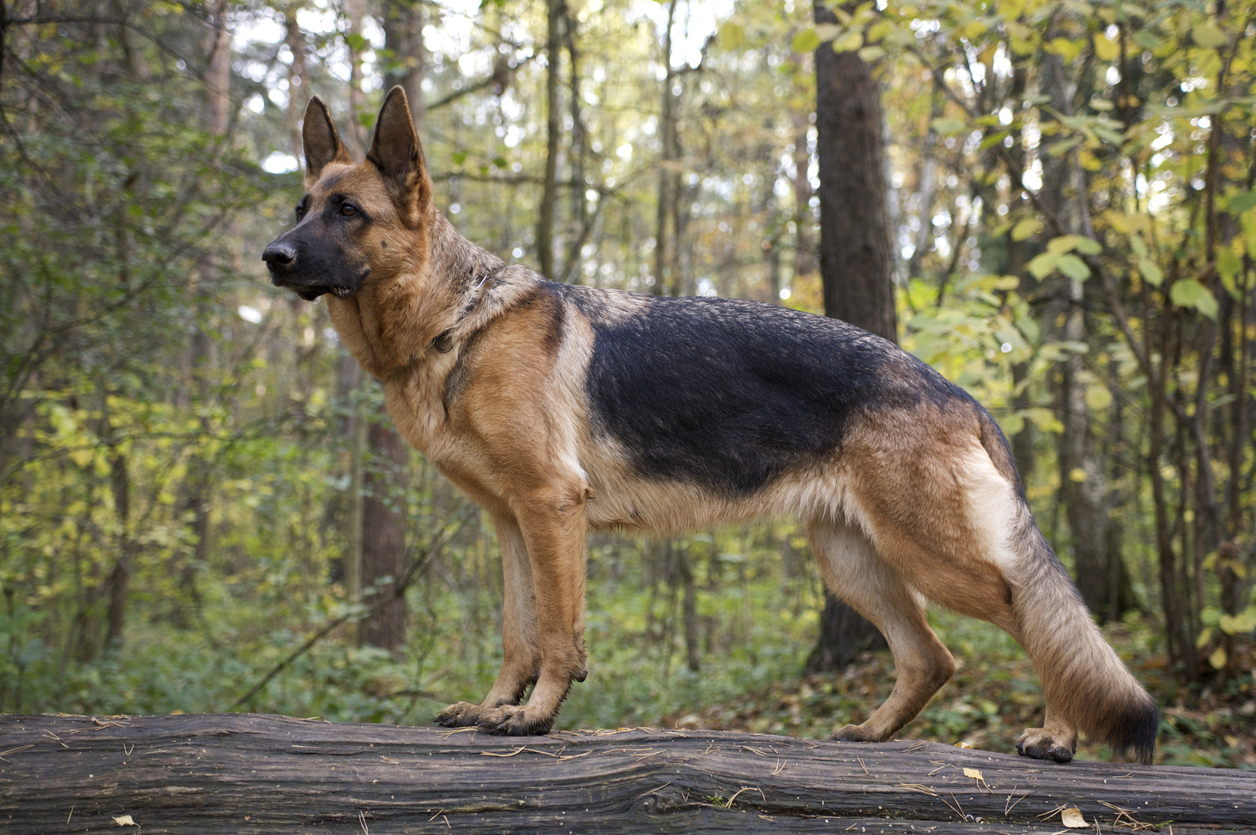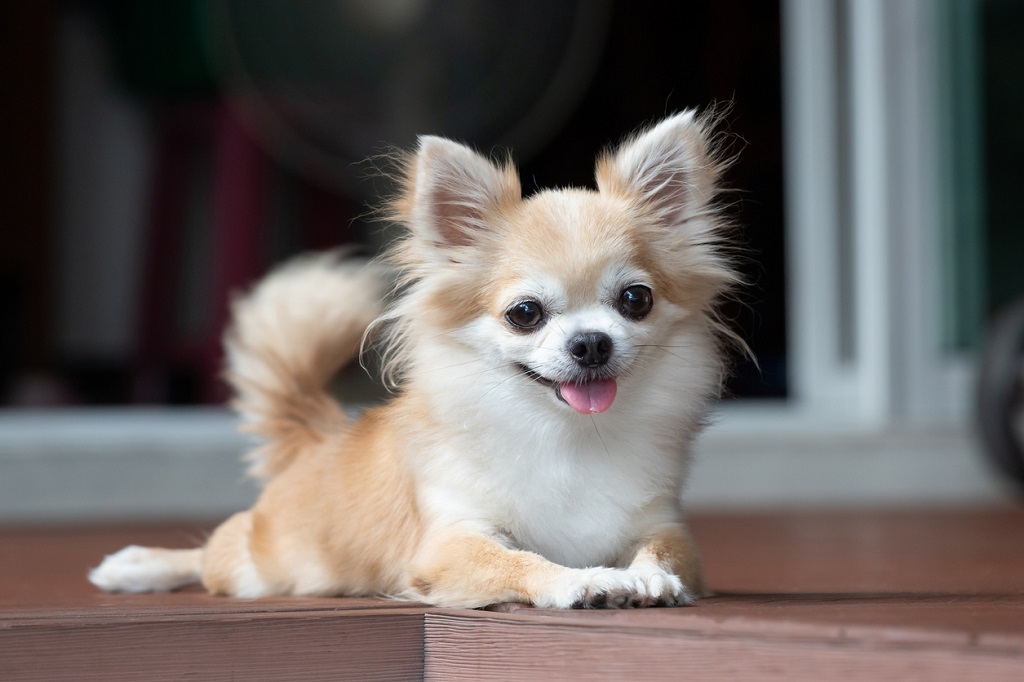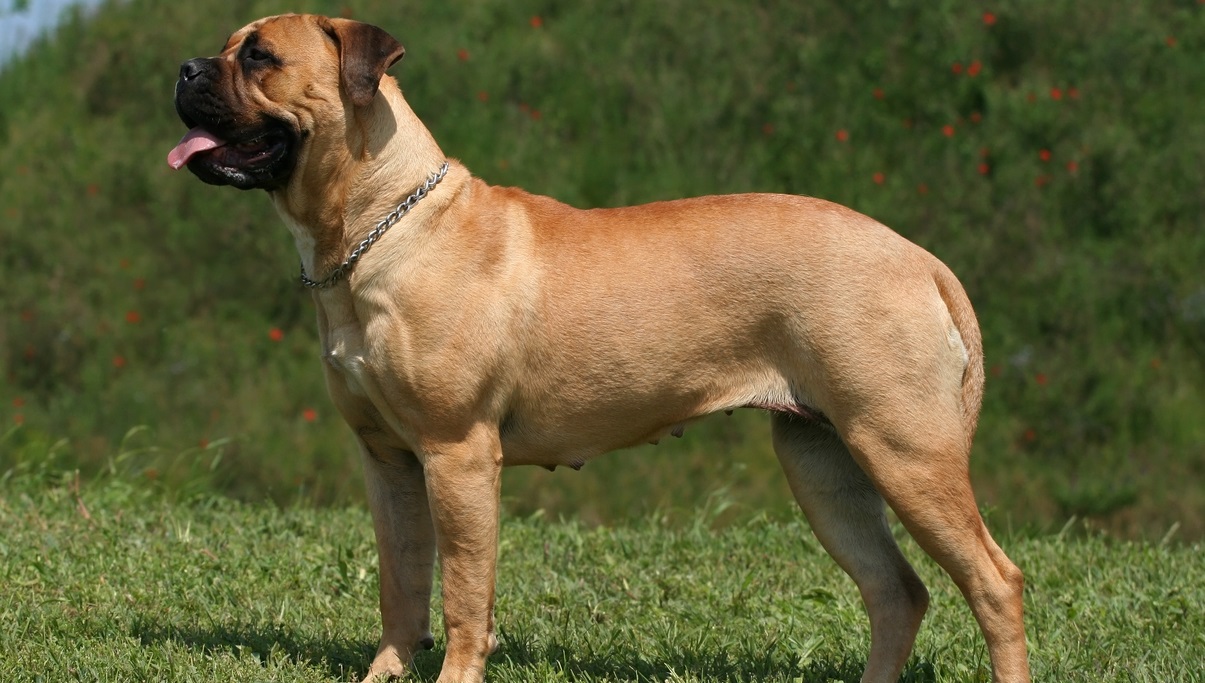For Pups With Short Attention Spans…
German Shepherds are known to be sizable dog averaging between 22-26 inches tall and 50 to 90 pounds in weight. There is a lot of variance between male and female shepherds, as well as breed line, with American GSDs typically being bigger and bulkier than their European counterparts.
German shepherds are noble creatures known for their muscular build, tight chest, and angled hind legs. They’re certainly a sight to behold—but how big do German shepherds get?
This breed can weigh anywhere between 50 and 90 pounds, and adult dogs often grow to be 22 to 26 inches tall. Yet, German shepherd dogs (GSDs) can surprise even the experts when their sizes veer off the measurement charts from time to time.1
That said, you don’t have to be Sherlock Bones to reasonably estimate what size bag of dog food to buy—and how often. We’re taking the magnifying glass to German shepherd size specifics.
The Ulti-mutt Breed Standard
Those of us lucky enough to say “Guten Dog” every morning to a vibrant, loyal, courageous, and confident German shepherd pup can likely expect to greet a sizable hound:2
- Height – The average female German shepherd grows to 22–24 inches tall, while males reach heights of 24–26 inches.
- Weight – Their weight can range from 65–90 pounds for a male German shepherd dog and 50–70 pounds for female German shepherds.
While aGerman shepherd puppy may seem small at first, the paws-ability that your dog could grow to over 90 pounds is not far-fetched.
Classified as a medium-to-large dog, the GSD usually growl-vitates to the larger side of dog breeds. Sporting a longer-than-tall, slightly rectangular physique,3 your GSD will potentially undergo these trans-fur-mations:4
- At six months old, the German shepherd dog should be approximately 44–50 pounds and 70% of adult height, depending on gender.
- Around ten months old, German shepherd growth spurts happen. The average German shepherd dog could , conceivably weighing 70 pounds and approaching 20 inches in height.
- At 18 months, healthy, young-adult German shepherds should be 98% of their full height and weight.1
Muscular and agile, a German shepherd dog doesn’t stop growing until three years of age.5 The male and female GSD counterparts should display differences in height, weight, muscularity, and bone density—with sexually dimorphic distinctions of masculinity and femininity between males and females, respectively.4
The breed standard for German shepherd dogs is established by these dog breed organizations:
- Verein für Deutsche Schäferhunde (SV) (German Shepherd Association)
- United Schutzhund Clubs of America (USCA)
- United Kennel Club (UKC)
- Canadian Kennel Club (CKC)
- American Kennel Club (AKC)
The standard is straightforward among all organizations with regard to height (males, 24–26 inches and females, 22–24 inches), yet, there doesn’t appear to be a similar model for weight.
Because of this, there are no dog-show weight constraints, allowing some GSDs to compete at over 100 pounds. In other words, it’s okay to be a chonk.


Where Variations Lie (and Sit and Stay)
Discovering how big your finger-nibbler will be by the time he graduates from puppy formula can be difficult to ascertain. At any rate, a German shepherd dog is known to be highly energetic.6
In fact, it’s likely that the GSD in your family has a physical exuberance that falls somewhere between jerky naps and zoom-zooms.
That said, knowing the dog breeds that may have contributed to your pooch’s genetics can determine how much space he’ll need for exercise and play during a typical lifespan. And how long do German shepherds usually live? It depends on a variety of factors.
Working Line vs. Show Line GSDs
Two lines of German shepherd dogs that have slightly different weight attributes are the working dog line and the show dog line:
- Working line – These dogs’ original breeding purpose was to work as guard dogs, military dogs, and K-9s. With thicker bones and heavier coats, these GSDs are bred to be hardy and tough to work long hours while withstanding the elements. Working line dogs are usually on the larger side of the GSD scope.
- Show line – These GSDs are bred for appearance and temperament to qualify for competing at dog shows. With shorter back legs and thinner coats, these dogs are slimmer and lighter than their working line peers.
(Both of these GSD lines make good family pets, but it is important to note that show dogs are more prone to joint and German shepherd hip dysplasia problems, although they have the softer temperaments out of the two lines.)7
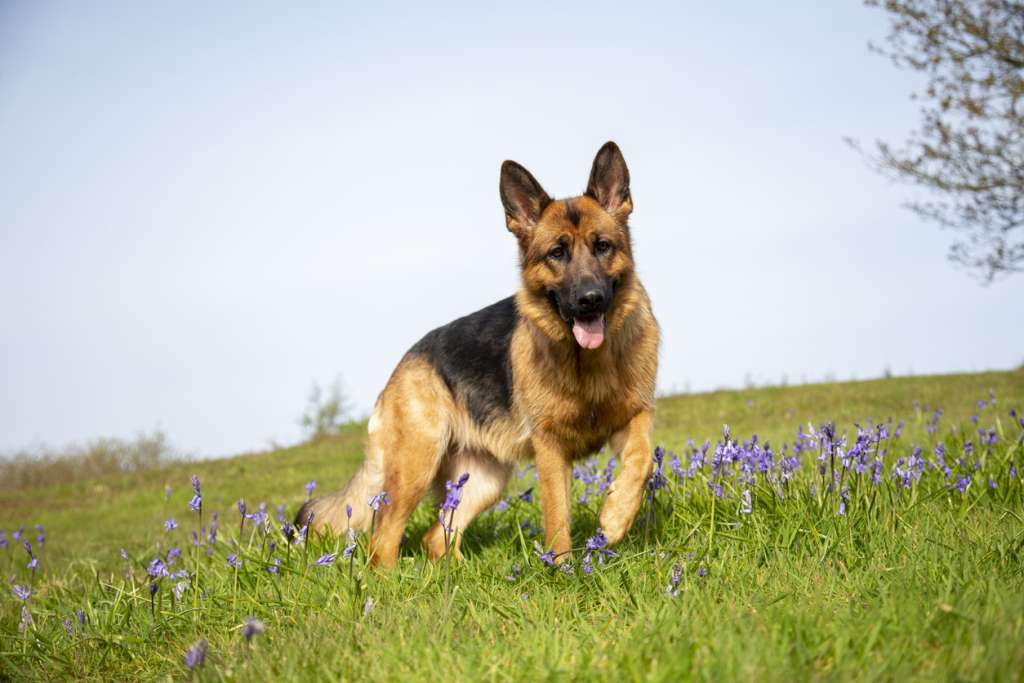

American vs. European GSDs
German shepherd dogs come from varying regions, which can influence breeding sizes. There are some physical differences between American and European GSDs:
- American – American GSDs have longer bodies, heavier bones, and weigh more than European German shepherds. GSDs bred in America tend to become “oversized” in comparison to the breed benchmark.
- European – European German shepherds are bred closer to show-dog standards, which means they are smaller and shorter than their fellows across the pond.
West German, East German, and Czech Working Lines
Working-class GSDs from Europe have slightly different measurements than American German shepherd dogs (much like the differences between American and European show lines).
West-German Working Line German shepherds are closest to the original GSDs created by Captain Max von Stephanitz in 1899:7
- The male German shepherd dogs of this gene pool reach 24–26 inches in height and 66-88 pounds
- The female German shepherd dogs weigh between 49–71 pounds and grow to heights of 22–24 inches
East German DDR Working Line German shepherds are mostly police, security, and search and rescue dogs:
- Like other GSDs, the males are heavier and taller than the females
- DDR dogs are larger, more muscular, and have blockier heads than average GSDs
- They can weigh anywhere from 49–88 pounds, with a maximum height of 26 inches8
Czech Working Line German shepherds are employed primarily for military, law enforcement, and security—but they’re friendly and gentle enough to fit into a family environment.
Athletic and physical, Czech German shepherds are a bit lighter-boned than the DDR, and similar in size to the classic GSD:
- A male Czech shepherd will reach 60–80 pounds, and females, 50–70 pounds
- Height averages 22–24 inches for males, and 20–22 for females9
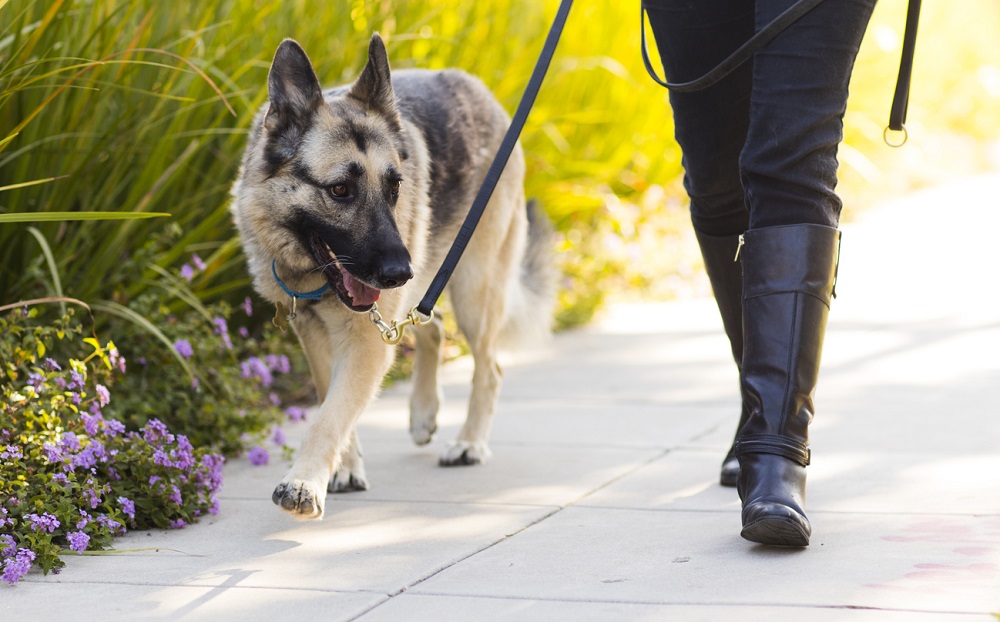

Shep-Shepherds and Hybrid Hounds
Although your floof might look exactly like the quintessential GSD, there may be a number of breeds bolstering his genetics.
Different types of shepherds (and non-shepherds) are intentionally bred together to encourage a particular characteristic in the line—or by “accident.” (Who can argue with puppy love?)
There are many adorable shepherd mixes with other dog breeds (so many), but for the purposes of this rawr-ticle we will stick with the kissing cousins.
Here are some popular hybrid and independent shepherd breeds that display size variations. (A hybrid’s height usually tilts toward the shorter of the two breeds.) To the lay-hooman, some of these mixes can be indiscernible from regular GSDs:
- Anatolian shepherd – A working group dog and the biggest known shepherd breed, the Anatolian stands at 27–29 inches and weighs 80–150 pounds.
- King shepherd – A hybrid between a German shepherd and a Shiloh shepherd dog, a King shepherd can reach heights of 25–31 inches tall and weigh 75–150 pounds.
- White Swiss shepherd – It takes a maximum of 19 months for a White Swiss shepherd dog to reach maturity. The final weight lands between 55–88 pounds, with a height of 22–26 inches. The females are on the lighter and shorter end of the scale.
- Belgian shepherd – The Malinois, Laekenois, Tervueren, and Groenendael are varieties of Belgian shepherd dogs. These dogs can reach 40–75 pounds in weight and 22–26 inches in height, depending on gender.
- Australian shepherd – These working-class beauties make good therapy and service dogs. Their weight falls between 40–55 pounds and 18–21 inches for females at two years, and 50–65 pounds and 20–23 inches at one to two years for males.
- German Australian shepherd – A German shepherd and an Australian shepherd went into a bar… After a few paw-tinis, a German Australian shepherd was born. These dogs have a weight range of 46–65 pounds and their approximate height reaches 18–23 inches.
- Miniature American shepherd (MAS) – A smaller version of the Australian shepherd, this herding dog was bred to enjoy both outdoor and indoor activities. This little shepherd is 13–18 tall and weighs between 20–40 pounds.
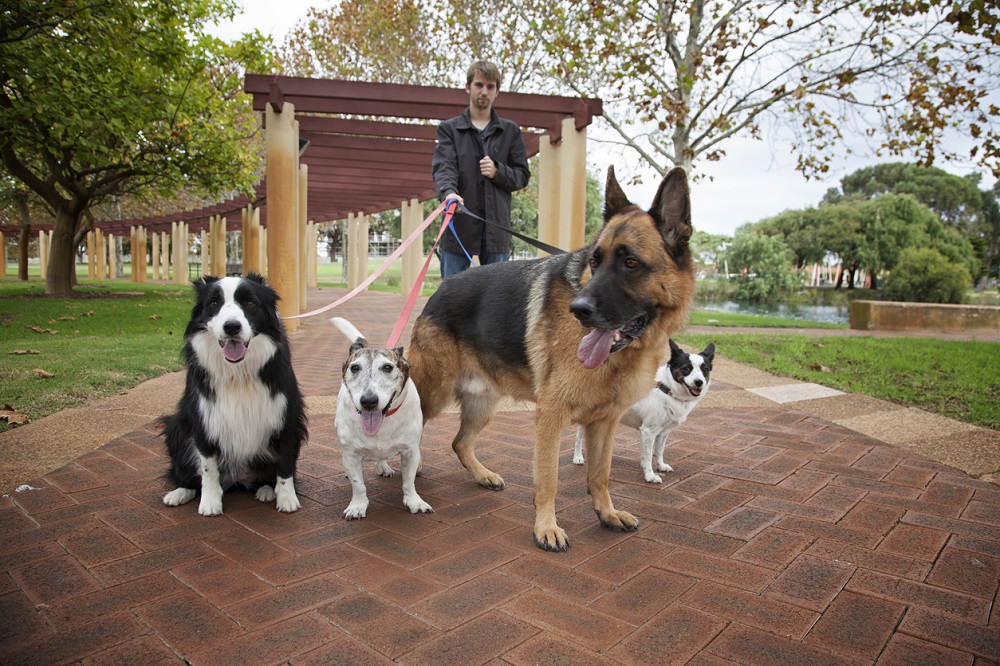

Nutrition Makes a Difference
If a GSD had opposable thumbs and a smartphone (with collar I.D.) they would probably do a Starbarks paw-fee run for a pup cup, of course. But, since your GSD depends on you for sustenance and hydration, it’s important to provide the best dog food available.
You want your GSD to be as strong and healthy as paws-able to reach their optimal height and weight.
Good nutrition and breed-specific food for each stage of a GSD’s life is essential in supporting their bones, vital organs, and growth. Stunted growth and other common German shepherd health issues can transpire from poor, unbalanced diets.10
Keep Your GSD Big and Strong with BARK Post
We hope we’ve doggedly addressed the question, how big do German shepherds get?, with the dexterity of a GSD.
That said, whether your GSD is on the larger or smaller end of the spectrum, good nutrition is crucial to German shepherd growth—and overall health.
That’s why BARK food for German shepherds deserves a round of appaws. This chow is formulated with ingredients to support a healthy lifestyle and contains a bowlful of omega fatty acids, glucosamine, and prebiotics to support your pup’s digestive, joint, and skin health.
BARK Post: It’s the leashed you can do for your best friend.
Sources:
- World of Dogz. When Do German Shepherds Stop Growing? GSD Growth Chart. https://worldofdogz.com/when-do-german-shepherds-stop-growing
- The American Kennel Club (AKC). German Shepherd Dog. https://www.akc.org/dog-breeds/german-shepherd-dog
- German Shepherd Dog Club of America. German Shepherd Dog Breed Standard. https://www.gsdca.org
- Anything German Shepherd. How Big Can Your German Shepherd Dog Get? Bigger Than You Think! https://www.anythinggermanshepherd.com/how-big-can-your-german-shepherd-dog-get
- Vetericyn. When Do German Shepherds Stop Growing? https://vetericyn.com/blog/when-do-german-shepherds-stop-growing
- The American Kennel Club (AKC). Is a German Shepherd Dog Right for You? https://www.akc.org/expert-advice/dog-breeds/is-a-german-shepherd-dog-right-for-you/
- World of Dogz. Working vs Show Line German Shepherds: Key Differences. https://worldofdogz.com/difference-between-working-line-and-show-line-german-shepherds
- Anything German Shepherd. DDR German Shepherd: Everything You Need to Know. https://www.anythinggermanshepherd.com/ddr-german-shepherd-everything-you-need-to-know
- AllShepherd. Czech German Shepherds. https://www.allshepherd.com/czech-german-shepherds
- Wag! (Wag Labs). Poor Nutrition in Dogs. https://wagwalking.com/condition/poor-nutrition
- German Shepherd Guide. The SV Standard for the German Shepherd Dog. https://www.germanshepherdguide.com/the-german-sv-standard.html
- Verein für Deutsche Schäferhunde (SV) e.V. Everything about the breed. https://www.schaeferhunde.de/en/the-german-shepherd
- Shepherd Sense. https://www.shepherdsense.com/why-is-my-german-shepherd-so-small
- AnimalWised. Types of German Shepherd – All Breed Variations. https://www.animalwised.com/types-of-german-shepherd-all-breed-variations-3042.html
- The United Schutzhund Clubs of America (USCA). Breed Standards. http://www.germanshepherddog.com/about/german-shepherd-dogs/breed-standards
- United Kennel Club. German Shepherd Dog – Herding Dog Group. https://www.ukcdogs.com/german-shepherd-dog
- Canadian Kennel Club. German Shepherd Dog. https://www.ckc.ca/en/Choosing-a-Dog/Choosing-a-Breed/Herding-Dogs/German-Shepherd-Dog
- Vetericyn. 5 Most Common German Shepherd Health Issues to Be Aware Of. https://vetericyn.com/blog/5-most-common-german-shepherd-health-issues-to-be-aware-of
- Animalso. 15 Things to Consider before You Choose a King Shepherd. https://animalso.com/breeds/king-shepherd


